Intro
Discover what FODMAP stands for and its impact on digestive health, including low FODMAP diets, IBS management, and symptom relief through dietary changes and nutrition planning.
Fermentable Oligo-, Di-, Mono-saccharides, and Polyols, a term that has gained significant attention in the realm of nutrition and digestive health. Understanding FODMAPs is crucial for individuals who experience digestive issues, as managing their intake can significantly alleviate symptoms. The importance of FODMAPs lies in their impact on the digestive system, particularly for those with irritable bowel syndrome (IBS) and other gastrointestinal disorders.
The concept of FODMAPs is relatively new, introduced by a team of researchers at Monash University in Australia. Since its introduction, a considerable amount of research has been conducted to understand how different types of FODMAPs affect the body. Essentially, FODMAPs are types of carbohydrates that can be difficult for some people to digest. They are found in a wide variety of foods, including fruits, vegetables, grains, and dairy products. The difficulty in digesting these carbohydrates can lead to a range of symptoms, including bloating, gas, abdominal pain, and changes in bowel movements.
The prevalence of digestive issues, such as IBS, has made understanding and managing FODMAPs a significant area of interest for both healthcare professionals and individuals seeking relief from symptoms. By grasping what FODMAPs are, how they affect the body, and how to manage their intake, individuals can take a proactive approach to improving their digestive health. This knowledge not only empowers individuals to make informed dietary choices but also opens up new avenues for the treatment and management of digestive disorders.
Introduction to FODMAPs
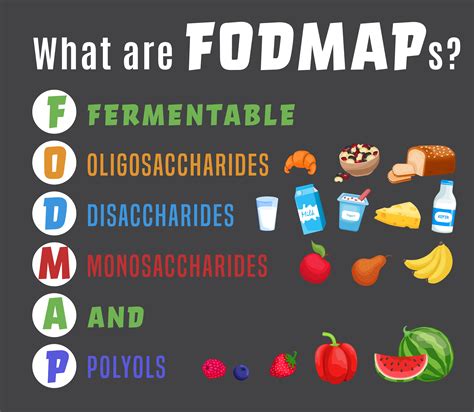
FODMAPs are categorized into five types: fructans, galactans, polyols, fructose, and lactose. Each type of FODMAP can cause different reactions in the body, depending on individual tolerance and the presence of specific enzymes or transporters in the small intestine. For instance, lactose intolerance occurs when the body lacks enough lactase, the enzyme that breaks down lactose, a sugar found in milk and other dairy products. Similarly, fructose malabsorption happens when the body has difficulty absorbing fructose, a common sugar found in many fruits and vegetables.
Types of FODMAPs
Understanding the different types of FODMAPs is key to managing their intake. Here's a brief overview: - **Fructans**: Found in wheat, barley, rye, onions, garlic, and some vegetables. Fructans are polysaccharides composed of fructose molecules and can be particularly problematic for individuals with IBS. - **Galactans**: These are found in legumes, such as beans, lentils, and soybeans. Like fructans, galactans are polysaccharides but are composed of galactose molecules. - **Polyols**: These include sorbitol, mannitol, xylitol, and isomalt, which are found in some fruits and vegetables and are also used as artificial sweeteners in sugar-free gum, candy, and baked goods. - **Fructose**: A simple sugar found in many fruits, vegetables, and honey. While naturally occurring, high fructose intake, especially in the form of high fructose corn syrup, can be problematic. - **Lactose**: The sugar found in milk and other dairy products. Lactose intolerance is common worldwide, especially in populations where dairy consumption is not traditional.The Science Behind FODMAPs
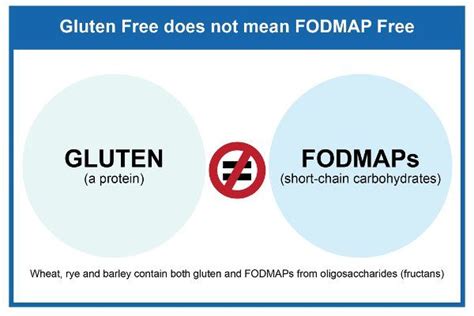
The science behind FODMAPs involves understanding how these carbohydrates are digested and absorbed in the body. Normally, carbohydrates are broken down into simple sugars in the small intestine, where they are then absorbed into the bloodstream. However, FODMAPs are not fully digested in the small intestine and instead move into the large intestine, where they are fermented by bacteria. This fermentation process produces gas, leading to bloating, discomfort, and other symptoms associated with FODMAP intolerance.
How FODMAPs Affect the Body
The effects of FODMAPs on the body can vary significantly from person to person. Some individuals may experience severe symptoms after consuming even small amounts of FODMAP-containing foods, while others may not notice any effects at all. Common symptoms include: - Bloating and gas - Abdominal pain and cramping - Changes in bowel movements (diarrhea or constipation) - Nausea and vomiting - FatigueManaging FODMAP Intake
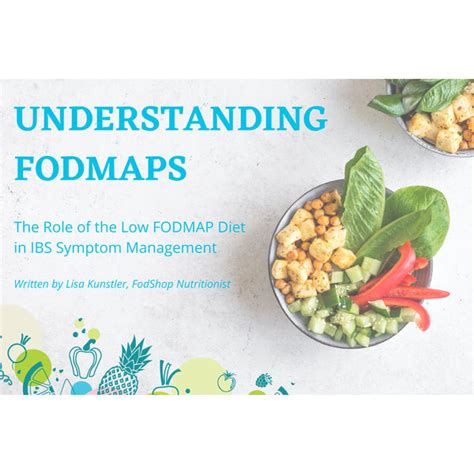
Managing FODMAP intake involves a systematic approach to identifying and reducing or eliminating FODMAP-containing foods from the diet. This is typically done under the guidance of a healthcare provider or a registered dietitian who specializes in FODMAP management. The process usually involves three phases:
- Elimination Phase: Removing all high FODMAP foods from the diet for a period, usually 2-6 weeks, to assess symptom improvement.
- Reintroduction Phase: Systematically reintroducing each type of FODMAP into the diet to identify which ones trigger symptoms.
- Modification Phase: Based on the results of the reintroduction phase, modifying the diet to limit or avoid problematic FODMAPs while ensuring nutritional adequacy.
Practical Tips for FODMAP Management
- Keep a food diary to track symptoms and food intake. - Learn to read food labels to identify hidden sources of FODMAPs. - Explore low FODMAP alternatives to favorite foods. - Consider working with a healthcare provider or dietitian for personalized guidance.FODMAPs and Nutrition
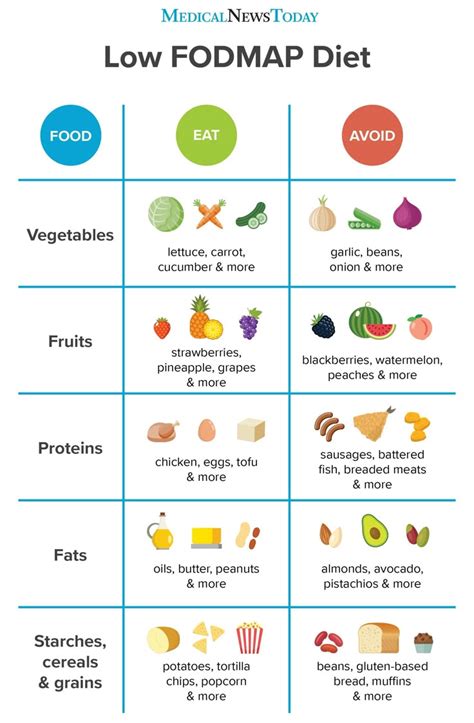
While managing FODMAPs is crucial for symptom relief, it's equally important to ensure that the diet remains nutritionally balanced. FODMAP-containing foods often provide essential nutrients, fiber, and prebiotics that support gut health. Therefore, it's critical to replace high FODMAP foods with low FODMAP alternatives that are rich in nutrients.
Nutritional Considerations
- Focus on whole, unprocessed foods as much as possible. - Ensure adequate fiber intake from low FODMAP sources. - Pay attention to calcium intake, especially if limiting dairy products. - Consider supplements if necessary, under the guidance of a healthcare provider.Conclusion and Next Steps
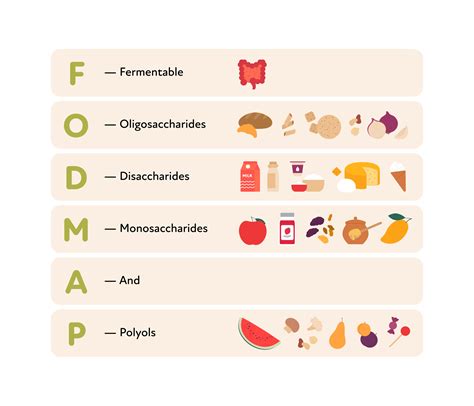
Understanding and managing FODMAPs can be a complex but rewarding process for those seeking relief from digestive symptoms. By grasping the basics of FODMAPs, understanding how they affect the body, and learning strategies for management, individuals can take significant steps towards improving their digestive health. Remember, it's essential to work with healthcare professionals to ensure that any dietary changes are made safely and effectively.
Final Thoughts
The journey to managing FODMAPs is unique to each individual, requiring patience, persistence, and the right guidance. As research continues to uncover more about the role of FODMAPs in digestive health, individuals can look forward to more tailored approaches to managing their symptoms. By staying informed and proactive, individuals can empower themselves to make the best decisions for their health.What are FODMAPs?
+FODMAPs stand for Fermentable Oligo-, Di-, Mono-saccharides, and Polyols, types of carbohydrates that can be difficult for some people to digest, leading to various digestive symptoms.
How do I know if I have a FODMAP intolerance?
+Common symptoms of FODMAP intolerance include bloating, gas, abdominal pain, and changes in bowel movements. If you experience these symptoms regularly, especially after eating certain foods, you may have a FODMAP intolerance.
Can I manage FODMAPs on my own?
+While it's possible to start learning about FODMAP management on your own, working with a healthcare provider or a registered dietitian is highly recommended. They can provide personalized guidance and support to ensure that you're making the best dietary choices for your health.
If you've found this information helpful and are considering making changes to your diet to manage FODMAPs, we encourage you to share your thoughts and experiences in the comments below. Your insights can help others who are on a similar journey towards better digestive health. Additionally, feel free to share this article with anyone who might benefit from understanding more about FODMAPs and their impact on health. Together, we can support each other in making informed choices about our diets and our health.
